Apple on Tuesday was granted a utility patent from the U.S. Patent and Trademark Office covering the glass-on-metal trackpad seen across the company's laptop lineup, with the award coming almost four months after the design rights were garnered for the same invention.
Apple's U.S. Patent No. 8,441,450 for a "Movable track pad with added functionality" is actually a wide-ranging property covering a number of design variations from the trackpad MacBook Pro and Air user have come to know. In January, Apple won a design patent for the glass-on-metal trackpad as used in the first unibody MacBook.
The idea itself is simple: to dispose a trackpad onto a surface with a hinged fixed at one end, allowing the unit to move from a neutral position, to an active position, and back. In essence, the entire trackpad becomes a large cantilevered button.
More importantly, the patent calls for, in one embodiment, a capacitive track pad with an etched glass surface. Because of its unique properties, and its non-conductive nature, glass allows for high levels of control during the manufacturing process.
The patent language describes a multi-touch enabled trackpad with one end attached to via a hinge mechanism to a laptop chassis. When a sufficient amount of force is applied to the unit, it moves to register an input signal through an integrated circuit board. Once the force is removed, the flexure hinge returns the trackpad to its resting position.
Apple points out that such a design could not be implemented prior to modern miniaturization techniques as the required springs and integrated circuitry would be too large to fit into the small space required by a thin laptop.
As for the choice of glass as the dielectric layer, or the non-conductive material which sits atop the capacitive touch panel, the material proves to be both structurally stable and highly customizable.
For example, traditional glass has a surface with a high friction coefficient, meaning it resists slippage, making it a less than suitable candidate for trackpad use. However, glass can be made to have a low friction coefficient by etching, sand-blasting, honing, or other methods. This makes the surface smooth and easy to navigate with a finger.
In the case of Apple's trackpad, a multi-step process of "seeding" the surface through mechanical or chemical etching, followed by a wet polishing with an acid solution is employed to achieve the proper finish.
Apple notes that the capacitive trackpad can be employed in a any number of devices, including standalone peripherals and smartphones. Such a "push screen" design was used by certain handset makers as a means of input, though the idea ultimately gave way to multi-touch gestures.
Also mentioned was the inclusion of LEDs or a display being disposed beneath the glass layer, an idea that has long been rumored to be included in a future MacBook since Apple first introduced the glass trackpad in late 2008. The company even holds a number of patents pointing to such a device.
Apple's trackpad patent was first filed for in 2008 and credits Brett William Degner, Patrick Kessler, Chris A. Ligtenberg, Thomas W. Wilson, Jr., Bartley K. Andre and Matthew P. Casebolt; Matthew as its inventors.
 Mikey Campbell
Mikey Campbell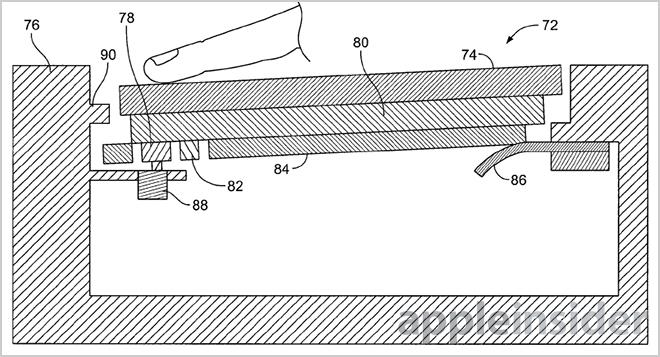
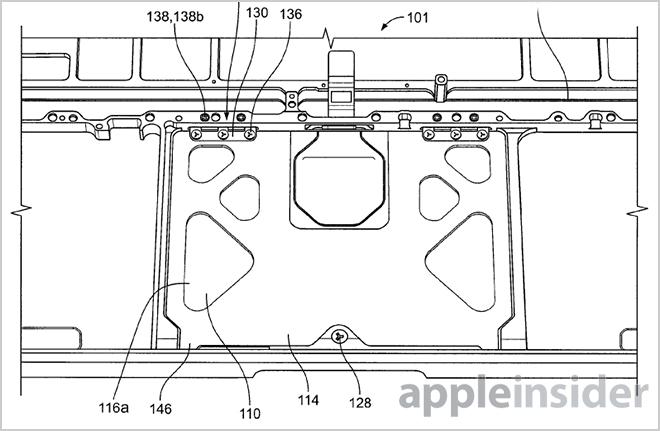
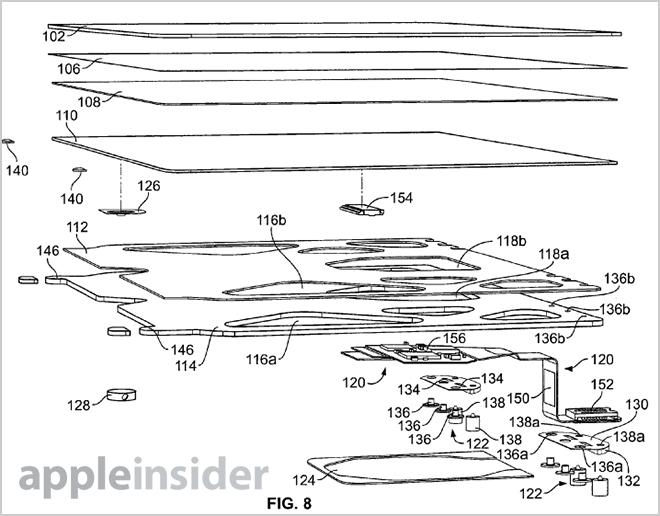
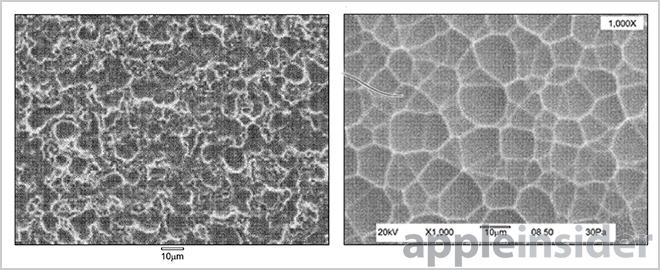







-m.jpg)






 Malcolm Owen
Malcolm Owen
 Amber Neely
Amber Neely


 Christine McKee
Christine McKee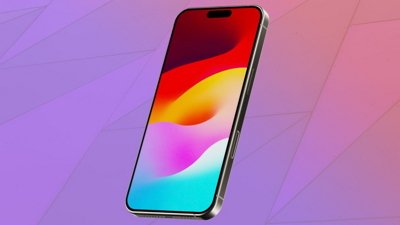

 Chip Loder
Chip Loder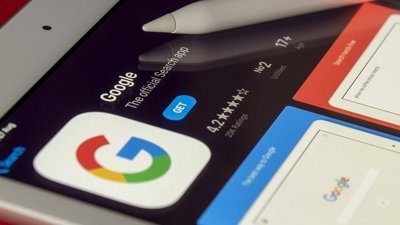
 Marko Zivkovic
Marko Zivkovic









14 Comments
Apple's trackpad is still one of the best design and function products around. No other competitor comes even close. It's pure elegance between software and hardware.
It just goes to show the sloppiness and ineptitude of the PC industry. Not only can they not get the hardware as polished as Apple's, but the botched drivers and half-a$$ed implementation is downright shameful. By the time someone gets even remotely close, the product is discontinued to make way for their next disposable generation device and re-invent the wheel.
That's the PC industry in general. They make everything, but can't do one thing well.
That's the XX industry in general. They make everything, but can't do one thing well.
Same can be said of the Android army too.
The best thing about Apple's trackpad is the size. It's definitely the best on the market.
Apple's trackpad is still one of the best design and function products around. No other competitor comes even close. It's pure elegance between software and hardware.
It just goes to show the sloppiness and ineptitude of the PC industry. Not only can they not get the hardware as polished as Apple's, but the botched drivers and half-a$$ed implementation is downright shameful. By the time someone gets even remotely close, the product is discontinued to make way for their next disposable generation device and re-invent the wheel.
That's the PC industry in general. They make everything, but can't do one thing well.
The PC industry's answer is making the entire screen a trackpad, so the user can get Monkey Grip.
Apple's trackpad is still one of the best design and function products around. No other competitor comes even close. It's pure elegance between software and hardware.
It just goes to show the sloppiness and ineptitude of the PC industry. Not only can they not get the hardware as polished as Apple's, but the botched drivers and half-a$$ed implementation is downright shameful. By the time someone gets even remotely close, the product is discontinued to make way for their next disposable generation device and re-invent the wheel.
That's the PC industry in general. They make everything, but can't do one thing well.
Yeah, I've used a friend's HP and Toshiba laptops and they sucked. The HP was HORRIBLE. Just a REALLY bad track pad. He had some really pathetic puny mouse that was just as bad. it was one of those mouse with a BlueTooth stick because the laptop didn't have Bluetooth. And we wonder why HP is not doing very well. They've had some really badly designed products. HP used to have decent stuff, but trackpad drivers for Windows has always been poor. Very touchy. Those Thinkpad eraser devices are even worse. I had to suffer with one of those for about a year. Horrible innovation.